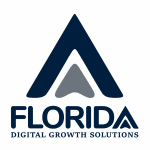The ever-changing landscapes of Google algorithms can be challenging for businesses to keep up with, resulting in fluctuating rankings and sometimes even penalties. With the right information and guidance, you can recover your rankings following these updates. In this comprehensive guide, you will learn how to recover rankings after an algorithm update and get back in good graces with Google.
Google uses complex algorithms to crawl the web, index pages, and then rank them based on numerous factors. They regularly update these algorithms to improve user experience and serve more relevant search results. While some updates are minor, others can lead to significant shifts in a site’s search engine rankings. Therefore, it’s crucial to understand how these algorithm updates work to adjust your SEO strategy accordingly and avoid any negative impacts on your website’s visibility.
Google’s updates might alter their ranking criteria, effectively changing the way they evaluate websites. This shift often leads to a change in a website’s rank on the search results page. Websites adhering to best practices and providing high-quality content are typically rewarded with higher rankings. Conversely, sites with poor SEO practices, irrelevant content, or a complicated user experience can see a drop in their ranks.
Local businesses can feel these impacts acutely, as Google’s updates often focus on improving localized search. Local SEO strategies need to be dynamic and adaptable to maintain high visibility and rankings in local search results.
To recover your rankings after an algorithm shift, you’ll need a clear understanding of the changes and a comprehensive recovery plan. Here are some recommended steps:
Before you take any corrective measures, confirm that a ranking plunge is indeed due to an algorithm change and not something else. Use SEO tools like Google Search Console to review website analytics and pinpoint any unexpected changes in traffic.
Each update is unique and targets distinct aspects of search engine optimization. Be it Penguin focusing on backlink quality or Panda scrutinizing content quality, understanding what the update is about will guide your recovery efforts in the right direction.
Conduct an in-depth website audit to assess the quality of your website and pinpoint weaknesses. This includes evaluating off-page and on-page SEO factors such as backlinks, content, and website speed, among others.
Based on your understanding of the update and the results of the website audit, create a comprehensive recovery plan. This plan should address both short-term quick fixes and long-term sustainable solutions.
As you outline your recovery plan, it’s invaluable to integrate certain local SEO tips that will help improve your website’s visibility in local search. These include:
An optimized Google My Business listing is imperative for local visibility. Ensure your business’s NAP (Name, Address, Phone number) is accurate and regularly update your business hours, products, and services.
Online reviews are a critical local SEO factor that influences consumer decisions and your website’s online credibility. Encourage satisfied customers to leave positive reviews, and always respond promptly to negative ones to maintain your brand’s reputation.
Learn More: Local SEO for Gyms and Fitness Studios
Recovering from an algorithm update should include devising local SEO strategies to improve your website ranking. Some potential strategies include:
Quality content that aligns with Google’s E-A-T (Expertise, Authority, Trustworthiness) criteria can significantly improve your website’s rankings. Regularly update the content to reflect the latest trends and customer interests.
Mobile-first indexing is a ranking factor that can’t be overlooked. Ensure your website is mobile-friendly to secure a place in the top rankings, since a large portion of local searches are made using mobile devices.
Inbound links from credible local websites can improve your website’s relevance and authority in local search. Therefore, acquiring high-quality backlinks should be an essential part of your SEO strategy.
Recovering your rankings after an algorithm update requires appropriate measures and constant adapting. By understanding Google’s algorithm changes, implementing effective local SEO strategies, and continuously monitoring your site’s performance, you can improve and stabilize your website’s rankings in the ever-changing SEO landscape.
At Florida Digital Growth Solutions, we specialize in helping businesses navigate these complexities. If you require assistance or guidance to recover your rankings after an algorithm update, don’t hesitate to get in touch with us for expert assistance and innovative local SEO solutions.

Key West | Daytona Beach | Sarasota | Tampa | Cape Coral | Fort Myers | Fort Lauderdale | West Palm Beach | Naples | Orlando | Miami | Hialeah